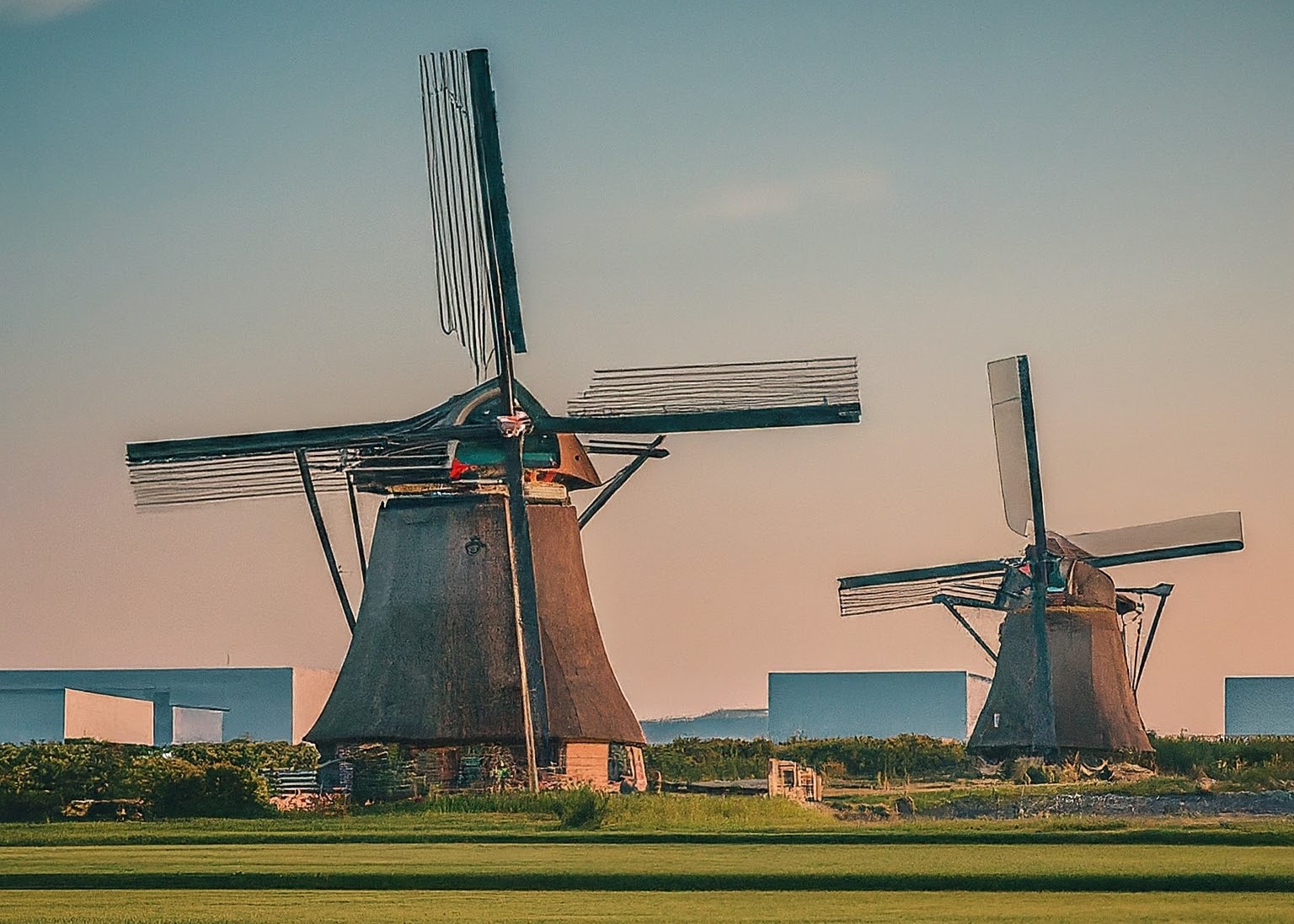Gadget of the Week
Gadget of the Week: From windmills to Wi-Fi
Three vast Cisco warehouses in South Holland signal the rise of the circular economy, as ARTHUR GOLDSTUCK chooses 7,000 refurbished products as Gadget of the Week.
In South Holland, near the highway from Amsterdam to Zoetermeer, three old Dutch windmills stand incongruously in a field, not far from giant wind turbines that almost mock the relics of wind technology’s history.
But even more incongruously, the old windmills are still working. While the giant wind farms nearby supply power to the region, the “molens” get on with their age-old role: pumping water from one canal to another.
The Molendriegang Stompwijk, as the trio is known, dates back to 1672. They were taken out of service in 1951, after almost three centuries of continuous use. The Province of South Holland acquired them in 1958 and spent 15 years restoring them before they returned to service.
The restoration of the ancient windmills into operational infrastructure is a perfect symbol of a massive project a few kilometres away to restore broken, used and returned computer equipment to use.
At the Dutch Tech Campus in the district of Zoetermeer, part of the greater Hague area, three vast warehouses are lined with ceiling-high shelves of seemingly random hardware. Here, a company called Reconext provides “aftermarket lifecycle services” for electronic products, meaning it repairs, refurbishes and reuses electronic devices to extend their useful life.
Reconext is a key player in what is known as the “circular economy”, an approach to production and consumption that involves sharing, leasing, reusing, repairing, refurbishing and recycling existing materials and products for as long as possible. It includes the principle of circular design, which requires manufacturers to use durable, reusable, repairable or recyclable components.
Reconext operates in 13 countries, but the site at Zoetermeer is dedicated to the products of one company: Cisco. The three warehouses, each with a floor space of 5,500 square metres, receive almost a third of the million parts that come back to Cisco globally every year.
Reconext and Cisco have been building and refining the “takeback” and refurbish process for 16 years, and the facility serves the entire Europe, Middle East and Africa (EMEA) region.
Cisco’s goal is to reuse and refurbish as many products as possible and has a goal to incorporate circular design principles into 100% of its new products and packaging by 2025. For the past five years already, it has had a policy of 100% product return upon request, at no cost to customers. A long-running programme called Cisco Refresh offers 7,000 products as refurbished, lower cost options, available in more than 70 countries.
“We have the opportunity to drive a twin transition that is digital, as well as green,” said Mary de Wysocki, Cisco chief sustainability officer. Her role was created in 2022, underlining the company’s commitment to the circular economy.
“We announced that sustainability is one of the top five customer focus areas,” she said during a tour of the Zoetermeer facility this week. “It’s not just the right thing to do for the climate, but the right thing for the next generation.
“The climate crisis is the crisis of our lifetime. If you look back on 2023, it was the warmest year ever. And it’s not necessarily getting better. The science tells us that we need to keep global temperature rise below 1.5 degrees Celsius, compared to pre industrial levels, to really keep the most dramatic consequences at bay. What does that look like? We’re talking about really weird weather, more severe weather, famines, drought, more conflict.”
Climate change is not an irresistible force, however. Human beings can help reverse the effects of the damage they have done.
“As we thought about a sustainable future, we really thought about what we’re calling a regenerative future,” said De Wysocki. “Regenerative really is a shift in your mindset, one that is really thinking about how we can build the capacity of our social and environmental systems to heal and thrive.
“We have three key priorities to make that happen. We know it’s possible. First, through accelerating the transition to clean and renewable energy. We just inked a 15-year agreement with Ignis, which is a leading renewable energy provider in Spain. What this is going to do is create net new capacity to the grid, providing new solar energy to the grid.
“Second, and equally important, is continuing to evolve from a linear business model to a circular. Circularity is an economic model that first of all designs out waste, but really thinks about not only the materials we use, but how do we design multiple life cycles of our products.
“Lastly, investing in risk-resilient ecosystems. We’ve all experienced over the last few years, how dependent we are on the economies, the community, the societies in which we operate. And this is where we want to help those communities adapting to climate realities, build the talent, the economic opportunities, within their system.”
The proof of the pudding, as they might have said, is in its recycling.
For example, by including circular design principles of packaging, Cisco saved 20 metric tonnes of foam in 2023. For one single product – the Catalyst 9000 Network Module networking switch – the company avoided more than 14 metric tonnes of foam in 2023.
The removal of paint from the product eliminated over 300 tonnes of oil-based wet paint and about 1,900 tonnes of carbon dioxide equivalent (CO2e) emissions
And that is on one product line alone.

















